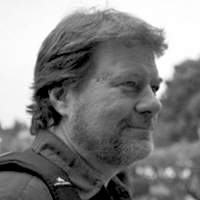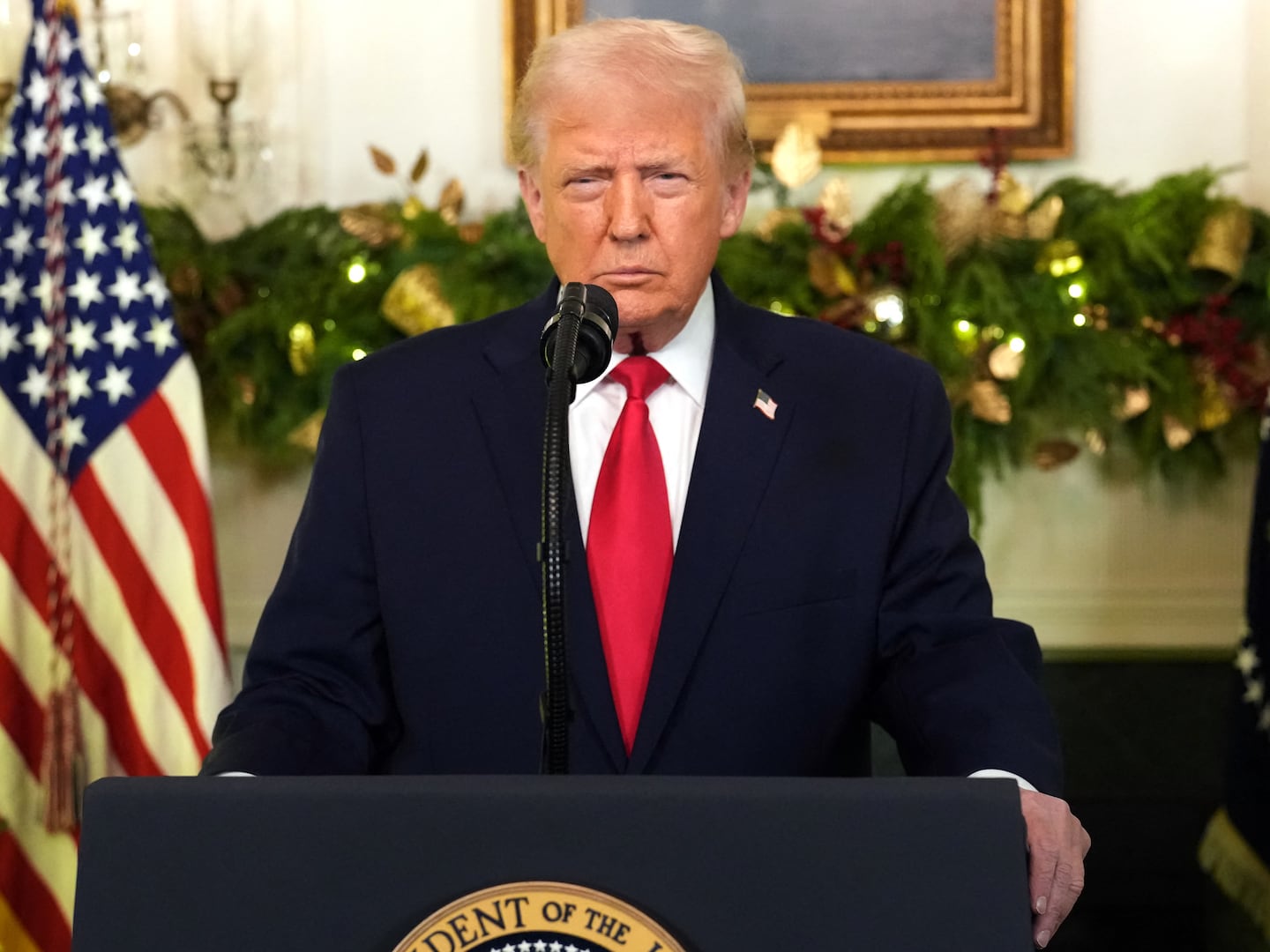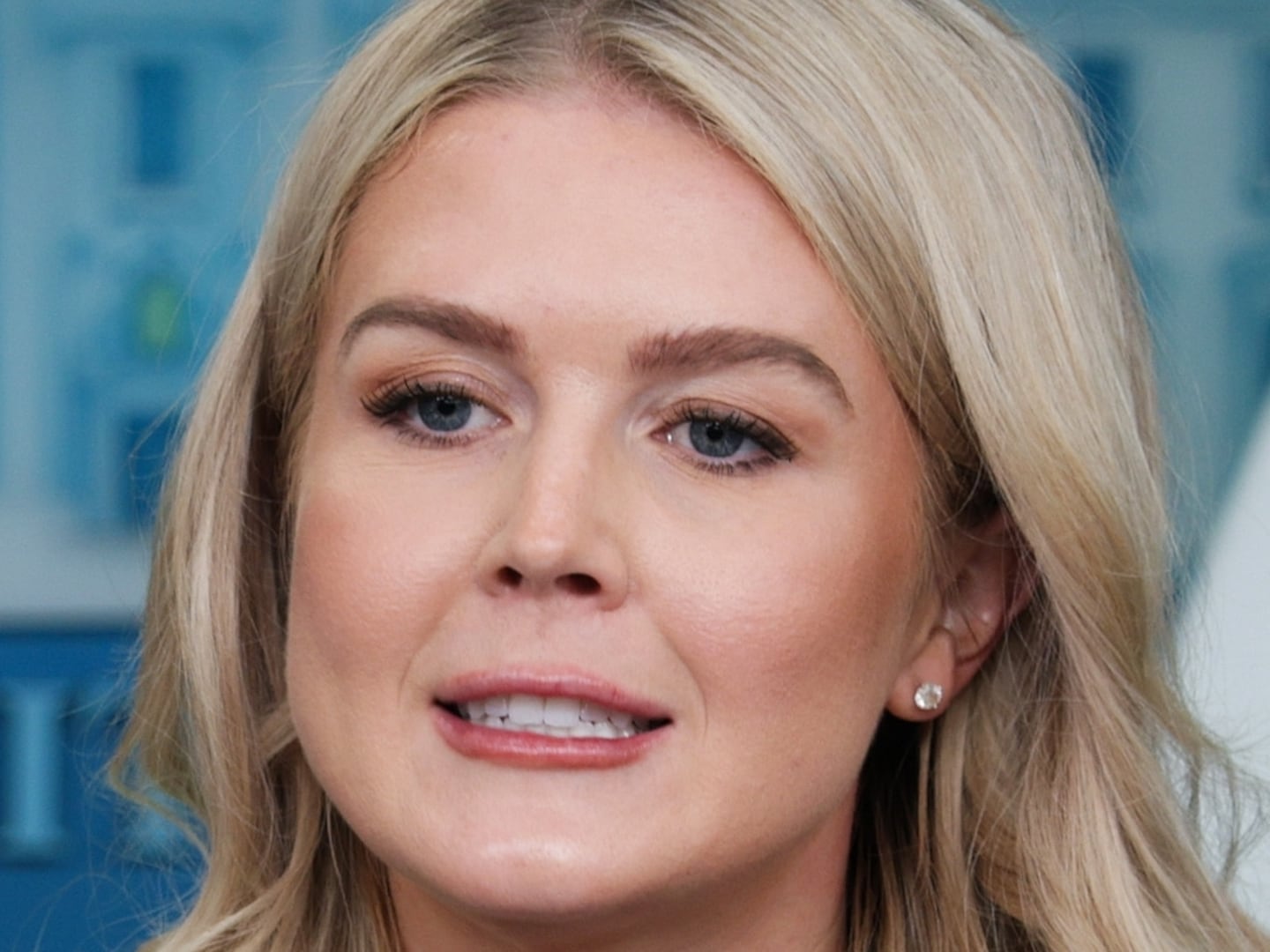As Antonio Zambrano Montes raced across a busy street in downtown Pasco, Washington, in the late afternoon of Tuesday, Feb. 10, three local police officers unleashed a volley of gunshots at his back.
Bullets whizzed past Zambrano and into rush-hour traffic on 10th Avenue, which intersects Lewis Street and the heart of a hardscrabble commercial neighborhood. After reaching the sidewalk on Lewis Street, Zambrano turned left with the cops in pursuit.
Zambrano, 35, a man of slight stature without a strong command of English, stopped some 20 yards from the corner of Lewis and 10th in front of a small pastry and sandwich shop, Vinny’s Bakery & Café. He turned toward the officers and raised his hands in an act of apparent surrender. The three police officers then unloaded another volley of eight or so shots into Zambrano’s torso. He fell to the pavement, bleeding out on the sidewalk as the cops handcuffed him. He was pronounced dead at the scene.
Only minutes earlier, Zambrano had been standing near a vacant lot strewn with rocks, which he had been throwing at passing cars—an act that drew the police to the scene after a witness called in a report on the disturbance. When confronted by the cops, Zambrano reportedly was uncooperative, and turned his rock assault on them. The three police officers used a Taser gun on him, apparently to no effect, leading to the shower of bullets during the pursuit across one of the busiest intersections in the city—all of it captured on cellphone video by a few of the dozens of citizen witnesses to the shooting that day.
Those videos have since gone viral on the Internet, putting an international media focus on Pasco, a city of some 68,000 residents, as the site of the latest Ferguson-like police shooting. But unlike Ferguson, where an unarmed person of color was similarly gunned down by a police officer this past summer, Pasco has not been marred by further violence.
Capt. Ken Roske, of the Pasco Police Department, told The Daily Beast that the vigils, rallies and marches—now a regular occurrence in Pasco since the shooting—have been peaceful and notable for a lack of arrests or property crime.
Community leaders within the largely Hispanic population of Pasco say that is by design, part of a well-organized movement to address what they see as a problem of a poorly trained police department that is out of touch with the community it serves.
In the wake of Zambrano’s shooting, the big question now facing the Pasco community is whether the police were justified in taking his life and in the process endangering bystanders and drivers by firing up to 15 rounds on a busy street during rush hour. Luckily, the errant bullets didn’t strike any innocent bystanders that day in Pasco, one of the so-called Tri-Cities, which are some 215 miles southeast of Seattle.
“This incident occurred in a very crowded area during rush hour, an area where people walk and there are children in the crosswalks,” said Felix Vargas, a Pasco resident and leader in the city’s Hispanic community. “Any one of those 15 rounds fired could have hit someone else.”
The Zambrano shooting “has the community holding its breath and very somber, waiting to see what happens next,” Vargas said.
Pasco Mayor Matt Watkins describes the mood of the community as having “a lot of different voices but unified in not wanting to ignore what happened and to do something about it.”
Zambrano is not the first victim to be gunned down by Pasco police in recent months. Since this past summer, two other persons have suffered similar fates, one of them the son of a former police detective. Law enforcers from nearby jurisdictions also shot and killed two people over the same period—one of them in Pasco. Unlike Zambrano, none of these victims was Hispanic, and all had weapons—a BB gun, a pellet gun, a knife and a high-powered rifle, according to media reports.
Franklin County Prosecutor Shawn Sant said the authorities involved in each of the four prior shootings were exonerated after a Special Investigations Unit conducted exhaustive probes. A similar SIU team is gathering evidence in the Zambrano case for Sant to review, in order to determine whether criminal charges should be filed against the three police officers who fired the fatal shots.
While Pasco is predominately Hispanic, its sister cities of Kennewick and Richland are predominantly white. The Tri-Cities metro area straddles two counties and is fed by an agricultural economy supported by migrant labor. The SIU members investigating the Zambrano shooting include law enforcement from Kennewick and Richland as well from Benton and Franklin counties, but not the Pasco Police Department—to assure, at least in theory, an objective investigation.
But that’s where a potential flashpoint within the Pasco community exists. The public face of the Hispanic leadership in Pasco is a group called Consejo Latino [the Latino Council), composed of elder Hispanic business people and professionals. One of its founding members is Vargas, a former marketing executive with Bell Helicopter Textron who served as a special-forces commander in Vietnam and later as a U.S. Department of State Foreign Service officer in Latin America and Europe.
“Consejo is a community organization set up last year to promote economic development in the dilapidated center of Pasco,” Vargas said. “In the course of this, we found challenges to economic development, and one of those was security and the role of the police downtown.”
Because police officers and leadership in Pasco are predominately white, with few speaking Spanish, “there is a culture and language disconnect” between the police and the community they serve, Vargas explained.
Vargas said the goal of Consejo Latino has been to help bridge that gap. In the wake of the Zambrano shooting, however, the organization now feels a sense of urgency in that mission and has taken on a leading role in helping to organize the larger Pasco community around two major goals.
“In the short to medium-term, we want to see a credible investigation into the shooting conducted,” Vargas said. “And we do not see any other option based on what we’ve seen in the videos but that charges must be filed against the three police shooters.
“And in the long term, we want to establish a commission to pursue meaningful reforms and changes to the way the police conduct themselves and deal with tough cases involving mental health, language barriers and culture, to help them be a better police force.”
Consejo Latino member Rick Rios stressed that these goals are being pursued with a strategy of nonviolence as the guiding principle, to demonstrate the community’s displeasure with what happened in the Zambrano case through actions that are within the law.
“The message coming from the Latino Council is very much an echo and evolution of the sentiments that have been shared in our community,” said Jeremy Peterson, an organizer with Occupy-Tri-Cities, which has played a key role in the street-protest efforts in the city, including maintaining a daily vigil outside City Hall. “We are collaborating as closely as possible in sharing feedback and ideas on how we can build reform and healthy community solutions.”
The tactics being employed by Consejo Latino are varied and evolving, including coordinating peaceful street protests with other groups, and reaching out to state and federal officials as well as the media to keep the spotlight on the local police force and SIU investigation. Vargas also has written a letter to U.S. Attorney General Eric Holder requesting that the Department of Justice launch an independent investigation on the federal level because, he said, the community has little confidence in the ability of local police to investigate themselves through the SIU process.
Zambrano’s widow and two minor daughters have filed a $25 million wrongful-death claim with the City of Pasco. The claim, a precursor to the filing of a federal lawsuit, describes the Zambrano shooting as an “unnecessary murder.” The local Tri-City Herald also reported this week that Benjamin Crump, who served as the attorney for the families of police-shooting victims Michael Brown and Trayvon Martin, has agreed to represent Zambrano’s mother and other family members.
At this point, FBI spokesperson Ayn Dietrich-Williams said her agency “is monitoring the investigation of this use of force” in the Zambrano case, but likely will “not get further involved” while the local SIU investigation is still underway.
“Its resolution will determine if we need to get further involved,” she added.
Still, there is an undercurrent of fear in the Pasco Hispanic community that even Consejo Latino’s leaders concede could work against a productive resolution of the tensions with the police force.
The pulse of that apprehension can be felt on the streets of Pasco.
Eleazar Fraijo works at Vinny’s Bakery & Café, where area residents have assembled a memorial of candles, flowers and posters along the sidewalk in front of the eatery near where Zambrano was killed. Fraijo says business at the restaurant has fallen off dramatically since the shooting. He said that before the incident, the shop was pulling in $600 to $700 a day, which is now down to about $110 a day.
“We can’t run a business without people,” he said. “We had one customer who told us he’s afraid to bring his little kids here.”
Norma Stewart, a Hispanic businesswoman who runs a women’s clothing store some five blocks from where the Zambrano shooting played out, said she took two hours out of her workday on Friday, Feb. 20, to participate in the ongoing City Hall vigil organized by Occupy-Tri-Cities.
“I did not get involved until this [the shooting] happened,” Stewart said. “There are a lot of different groups now trying to get together as one. I want them to hear me, but in a peaceful way.”
Stewart stressed that she “is not against the police, just their abuse of authority.”
“The Hispanic population here is scared of the police,” she added.
The disconnect between the Pasco Police Department and the local Hispanic community is evidenced by a meeting Consejo Latino’s leaders had with Police Chief Bob Metzger and several of his top commanders on Jan. 27, some two weeks before the Zambrano shooting, Vargas and Rios said.
“In the aftermath of Ferguson, we said, ‘Is there something we can do in our community in working with the police to help avert a possible scenario like what happened in Ferguson?’” Vargas recalled. “So we met with police and had an inconclusive meeting at best.
“The police chief and three of his best officers were, to put it mildly, in denial that there was a problem in Pasco of cooperation with the Hispanic community, of underlying tensions and a possibility that a Ferguson-like scenario could occur.”
Chief Metzger, however, when asked about that same meeting, saw things differently.
“We did meet with the Consejo Latino and discussed many issues in a two-hour meeting,” he said. “The original intent of this meeting was to discuss concerns about the downtown business area.
“We were not dismissive and in fact were very engaged, “ Metzger added. “We had a frank discussion about concerns in our community and like everyone there, we are concerned about them as well. I pointed out to this group that in the past 20 years we have been able to reduce our crime levels from among the highest in Washington to the lowest.”
In a moment of candor on the part of a Pasco Police Department spokesman, Sgt. Scott Warren told The Daily Beast that he is “frustrated” with the reaction of some groups in the Hispanic community to the Zambrano shooting.
Vargas and Rios stressed that what’s at issue in Pasco is not a racial matter, but rather a failure of training and communication on the part of the police department. Yet Vargas did point out that one of the officers participating in the Zambrano shooting also was involved in a prior incident of “racial profiling.” In that case, the officer slammed a Latina woman mistakenly suspected of a crime onto the hot hood of a car, causing second-degree burns to her face, and resulting in the city having to pay out $100,000 as part of a lawsuit settlement, according to the woman’s attorney, Vito de la Cruz.
“There was a bad apple there,” Vargas said. “And I’d say in his personal case he had some issues that border on racial animosity, but one bad apple doesn’t taint the whole barrel. We don’t see the police force here as being racially motivated.
“You have a broken down community relations and outreach program here by the police force,” Vargas adds. “We can’t be successful if they continue to be in denial about that.”
Vargas also cautioned that should there be an outcome in the Zambrano case that doesn’t adhere to the larger community’s sense of justice, “we won’t be able to keep the forces in line at that point.”
Franklin County Prosecutor Sant concedes that the decision on whether to prosecute the three police officers in the Zambrano shooting will come down to the laws now on the books related to police use of deadly force. And in Washington, as in most states around the country, the law allows police to employ deadly force in cases where a suspect is engaged in committing a felony. Sant points out that assaulting police officers—as Zambrano appeared to be doing prior to his death—is a felony.
Keely Geyer Latterner, a criminology professor at the University of North Carolina Wilmington, explains that there are limitations on the use of deadly force, however, even in the case of a felony. Washington’s law on the use of deadly force states that a “peace officer must have probable cause to believe that the suspect, if not apprehended, poses a threat of serious physical harm to the officer or a threat of serious physical harm to others.”
If the SIU investigation determines Zambrano was holding a rock in his hand when police confronted him for the final time on a busy street, will that be grounds for a finding by the prosecutor that Zambrano still posed a “threat of serious physical harm” to others?
To be clear, Sant is nowhere near making such a judgment at this point in the investigation, but that is a scenario he could well face in the future.
“The police are allowed to use deadly force in situations where a felony crime is being committed,” Geyer Latterner said. “But there are restrictions, and more and more, when the police don’t abide by those restrictions, they are rarely indicted.
“There appears to be a lack of negotiation skills and shooting always seems to be the solution. There at least has to be a conversation about alternative solutions.”
Zambrano had a run-in with Pasco police last year in which he demonstrated similarly erratic behavior, including allegedly throwing a chair and attempting to grab a police officer’s gun before being arrested and eventually sentenced to six months in the county jail, according to media reports. Rios stressed that Zambrano, who had lived in the community for some 10 years after migrating from Mexico to work in the orchards in the Pasco area, was a troubled individual with likely mental-health issues. He was separated from his wife and homeless at the time of the shooting after having lost his job due to an accident in which he broke his wrists, according to Rios.
At this point, the police have released few details of their investigation, though they have confirmed Zambrano did not have a knife or gun at the time the shooting. The three police officers involved in the shooting are on administrative leave pending the investigation.





